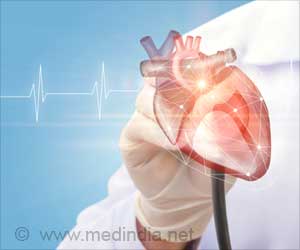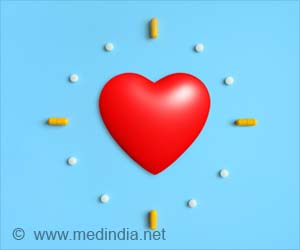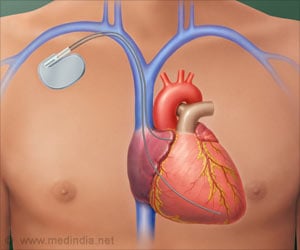Elite athletes screened for genes linked to dilated cardiomyopathy. Those with high genetic load were 11 times more prone to reduced heart function.

Reduced Ejection Fraction in Elite Endurance Athletes: Clinical and Genetic Overlap With Dilated Cardiomyopathy
Go to source) Thus, a genetic predisposition may be ‘stressed’ by exercise to cause profound heart changes. The international collaboration will continue to monitor the athletes over the long-term to determine the consequences on their heart health.
‘1 in 6 athletes displayed diminished heart pumping and unveiled the genetic impact on their heart function for the first time. #heartdisease #athletes’





Associate Professor Andre la Gerche, who heads the HEART Laboratory that is jointly supported by St Vincent’s Institute in Melbourne and the Victor Chang Cardiac Research Institute in Sydney, says the findings highlight the need for far closer monitoring of the heart health of elite athletes. A/Prof La Gerche says: “We have long known that elite athletes have very different hearts to the general population. Exercise promotes profound heart changes. The heart is large in all elite athletes but there is still considerable variation ranging from large to enormous. The long-term significance of the most extreme changes is not yet certain".
“We want to keep our athletes healthy and prevent them from suffering a sudden cardiac arrest. The better we understand the athletes’ heart, the more we will be able to identify risks in advance of tragedy.”
Professor Guido Claessen, affiliated with the Jessa Hospital, University of Hasselt and KU Leuven in Belgium, says the findings primarily argue for close cardiological follow-up of elite athletes and that genetic screening in the future could become part of the preventive examinations that top athletes receive.
“The significance of the most extreme changes on long term needs to be further investigated. It is crucial we continue to monitor these athletes over the long-term to determine the future health effects – which could prove positive or negative,” says Professor Claessen.
Advertisement
Key findings
- One in six athletes (15.7%) had heart measures that fall in a range normally associated with heart disease – including an enlarged heart, irregular rapid heartbeat and changes in the heart’s left ventricular chamber that is responsible for pumping blood full of oxygen out to the body.
- The reduced heart function was only observed when they were at rest. When exercising, the heart functioned at levels known as super normal which means their hearts were able to substantially increase the pumping action when needed to boost cardiac output.
“It’s very important we don’t think of these athletes as having sick hearts because they can still function at a very high level. But we don’t know what the long-term effect will be and if this means these athletes will go on to develop cardiomyopathy.”
Professor Hein Heidbuchel of the Antwerp University Hospital (UZA) says it is now vital to continue to follow the same group of athletes over the next 25 years to see if they do indeed develop heart problems.
Regular exercise is associated with clear health benefits. But there may be a small group with a genetic predisposition that is good for developing an elite sports heart at a young age, but could be dangerous in the long term if they continued exercising at this very high level.
“The main objective of our research is to make sports practice safe for all participants. A better understanding of the interplay between genetic characteristics and intensive exercise is an important step towards this goal," concludes Professor Heidbuchel.
Reference:
- Reduced Ejection Fraction in Elite Endurance Athletes: Clinical and Genetic Overlap With Dilated Cardiomyopathy - (https://www.ahajournals.org/doi/abs/10.1161/CIRCULATIONAHA.122.063777)














